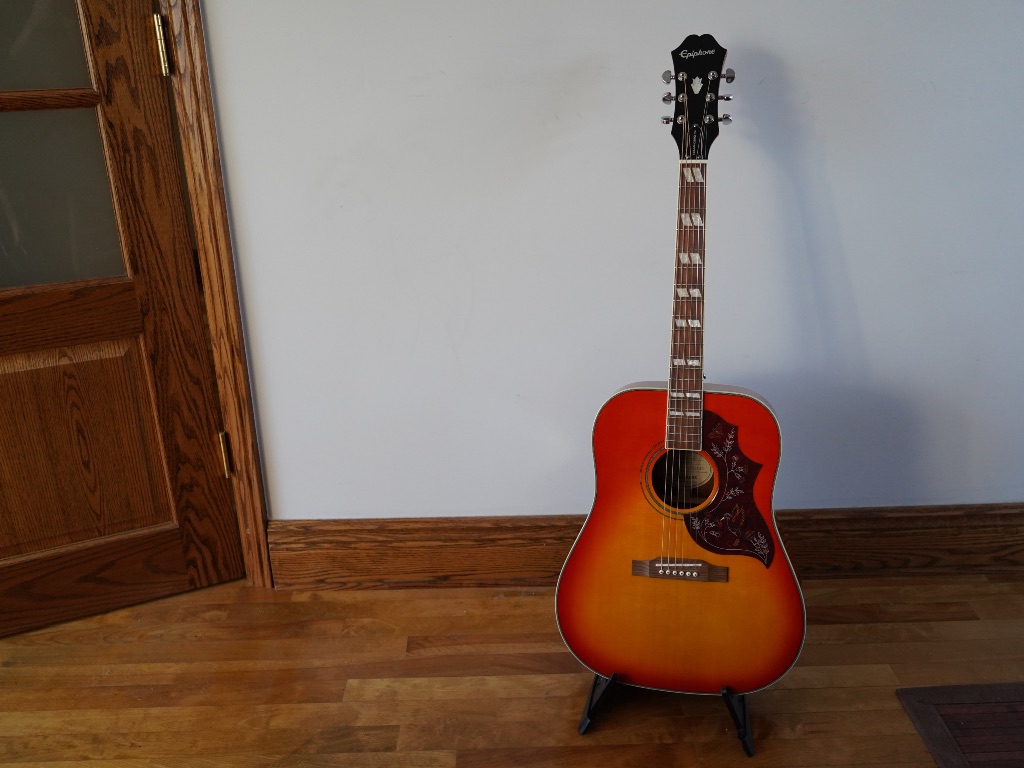 The Gibson Hummingbird is a long-standing model in the company’s rich history. Throughout its existence, it’s been picked up by famous artists such as Keith Richards, Sheryl Crow, Thom Yorke, Chris Cornell, and both Bono and The Edge of U2. The Rolling Stones famously wrote many hits on this six string, such as “Satisfaction”, “Angie”, and “Wild Horses”. With the cost of production being what it is, it’s a blessing that the American manufacturer enlisted subsidiary Epiphone to craft a more affordable version of the Hummingbird. I took it for a spin, and I’m here to report on how it did.
The Gibson Hummingbird is a long-standing model in the company’s rich history. Throughout its existence, it’s been picked up by famous artists such as Keith Richards, Sheryl Crow, Thom Yorke, Chris Cornell, and both Bono and The Edge of U2. The Rolling Stones famously wrote many hits on this six string, such as “Satisfaction”, “Angie”, and “Wild Horses”. With the cost of production being what it is, it’s a blessing that the American manufacturer enlisted subsidiary Epiphone to craft a more affordable version of the Hummingbird. I took it for a spin, and I’m here to report on how it did.
First of all, make sure to check out my first impressions and several sound samples in this short video.
Beautiful design

At a glance, Epiphone’s Hummingbird doesn’t seem different from Gibson’s. That’s because it features every single aspect of the original instrument. The most evident element is obviously the pickguard. This part is emblematic and really gives the guitar its identity. The curvy shape and beautifully drawn hummingbird is somewhat of a hit or miss for some people, but it’s there nevertheless. Other decorations include the wonderful sunburst cherry finish, cream binding along the body and neck’s edges, and big twin parallelogram inlays. Even the bridge pins have inlays!
Great features
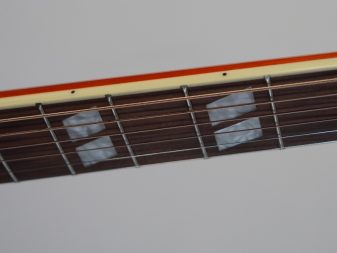 The materials used in this guitar are standard for higher-end models and really increase the value of this model. The neck, back, and sides are mahogany, promising a warm, satisfying, mid-range. The top consists of tried and true solid spruce. An important thing to note is that it’s not laminate, so you get the full tonal benefits of solid woods for the entire construction.
The materials used in this guitar are standard for higher-end models and really increase the value of this model. The neck, back, and sides are mahogany, promising a warm, satisfying, mid-range. The top consists of tried and true solid spruce. An important thing to note is that it’s not laminate, so you get the full tonal benefits of solid woods for the entire construction.
I’m happy to report that the machine heads are third-party made tuners by Grover. This is good news because one of the biggest qualms about more affordable guitars is the tuning stability. It’s a wise decision by Epiphone to leave the fabrication to a more specialized manufacturer.
Last but not least, you get a genuine Fishman pickup system. This, again, adds tremendous value, because this company is one of the leading makers of acoustic instrument pickups. In this case, it’s a simple piezo model. It has tons of benefits, such as being a pretty standard type of tone that any sound engineer can work with, and it doesn’t require a battery to function.
Great playability
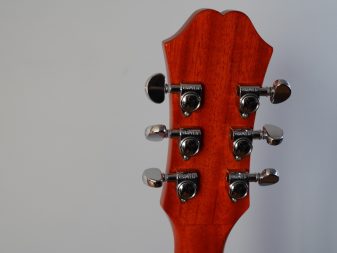 Out of the box, the Epiphone Hummingbird came ready to play. It had a comfortable medium-low action that lent itself to various techniques. The neck isn’t overly wide and is based on a slim-taper D profile. The nut width is of 1.69″, which is essentially the standard electric nut of 1 11/16″. This makes for a good playing experience, and the string spacing might be more friendly than the 1 ¾” that is found on a lot of acoustics. The scale is also Gibson’s preferred length of approximately 24 ¾” (24.72″ to be exact, according to the specs). This offers slightly slinkier feeling strings and ever so slightly smaller distances between frets.
Out of the box, the Epiphone Hummingbird came ready to play. It had a comfortable medium-low action that lent itself to various techniques. The neck isn’t overly wide and is based on a slim-taper D profile. The nut width is of 1.69″, which is essentially the standard electric nut of 1 11/16″. This makes for a good playing experience, and the string spacing might be more friendly than the 1 ¾” that is found on a lot of acoustics. The scale is also Gibson’s preferred length of approximately 24 ¾” (24.72″ to be exact, according to the specs). This offers slightly slinkier feeling strings and ever so slightly smaller distances between frets.
The neck is finished, so it is glossy. Some players don’t like that it sometimes becomes sticky in humid and/or hot conditions, or can even get slippery when a lot of sweat is involved. Apart from those situations, it feels really good and provides a comfortable and pleasant sensation for the hand. It’s definitely a subjective preference, so make sure you investigate for yourself, if possible.
Awesome tone
The tone was definitely pleasant. The beloved combination of mahogany and spruce produced that satisfying singing type of sound we know and love. Being a dreadnought, it offered great projection and volume when strummed, while being gentle and complex when using a finger-picked style. If you want to own only one acoustic guitar, this is the shape to go for.
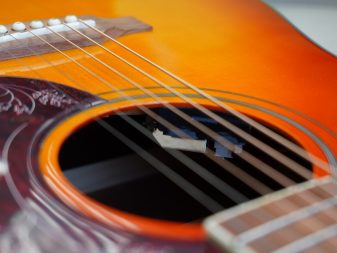 Finally, the Fishman provides a quality piezo sounding plugged-in tone. If you are familiar with this type of pickup system, you’ll immediately recognize its quacky, immediate character. A lot of sound technicians record this way, even on professional recordings. Although it doesn’t transmit the complex character of an acoustic, it’s still an efficient and recognizable tone. I find it very helpful in many situations, and very useable, especially if paired with careful sound manipulation. You can always swap it out for a more sophisticated system down the line.
Finally, the Fishman provides a quality piezo sounding plugged-in tone. If you are familiar with this type of pickup system, you’ll immediately recognize its quacky, immediate character. A lot of sound technicians record this way, even on professional recordings. Although it doesn’t transmit the complex character of an acoustic, it’s still an efficient and recognizable tone. I find it very helpful in many situations, and very useable, especially if paired with careful sound manipulation. You can always swap it out for a more sophisticated system down the line.
Appropriate for a wide variety of players
While being a lot more affordable than the authentic Gibson model and the equivalent guitars from other manufacturers, the Epiphone Hummingbird is still more expensive than entry-level options. That being said, I still love this choice as a first guitar. With so many great features and possibilities, I find that a beginner who’s absolutely sure to seriously pursue the activity should consider this instrument. The reality with entry-level instruments is that they eventually (sometimes quickly) get replaced with mid-range or higher-end models, resulting in a total expense that’s larger than picking a guitar in this range.
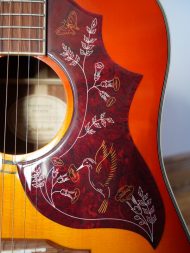 In other words, this is a great, future-proof choice. Thanks to quality materials, an integrated pickup system, and solid tuners, you won’t be wishing you went with a different product any time soon. It’s perfect to learn on, providing a suitable platform to grow into, and it will serve you well for years to come. The smaller scale length also provides a slightly friendlier introduction to the guitar.
In other words, this is a great, future-proof choice. Thanks to quality materials, an integrated pickup system, and solid tuners, you won’t be wishing you went with a different product any time soon. It’s perfect to learn on, providing a suitable platform to grow into, and it will serve you well for years to come. The smaller scale length also provides a slightly friendlier introduction to the guitar.
For people that already play guitar, this is an excellent choice in many situations. For instance, if like me you’re more oriented towards electrics, this is a solid, all-around acoustic to own. The dreadnought shape lends itself well to various different playing styles. Also, for those upgrading from an existing acoustic, this might be the perfect step-up for you.
Gibson’s heritage is definitely present in Epiphone’s Hummingbird. The number of features and high value packed into this guitar is commendable. Also, it’s nice to know that so many beloved songs have been written on this model. It was a wise decision to offer that same type of inspiration at a more affordable price point.
With so much to like, make sure you check out the Epiphone Hummingbird on Best Buy’s website.



